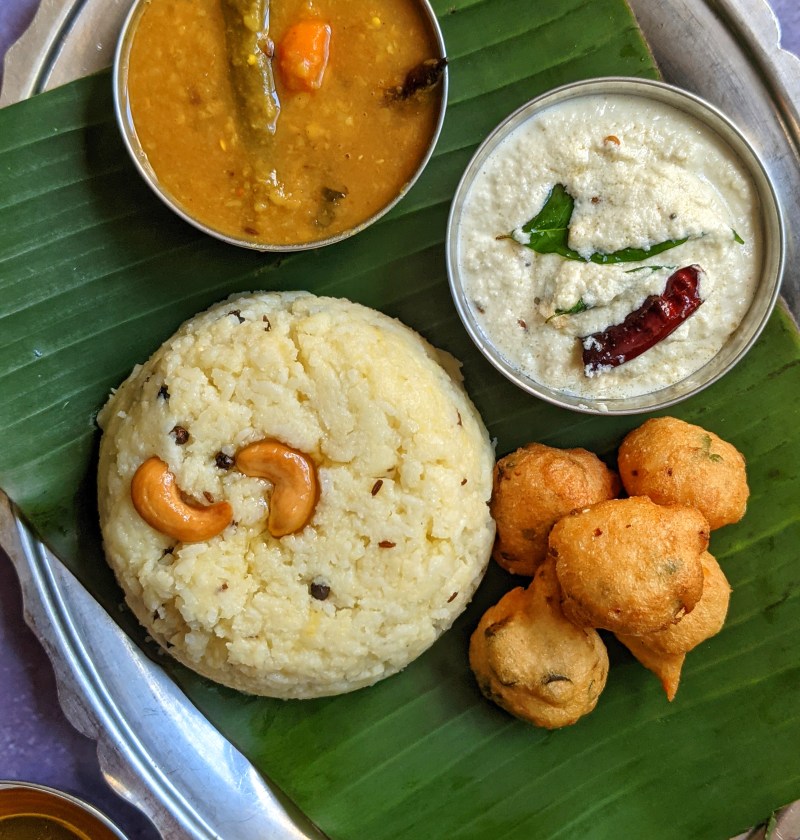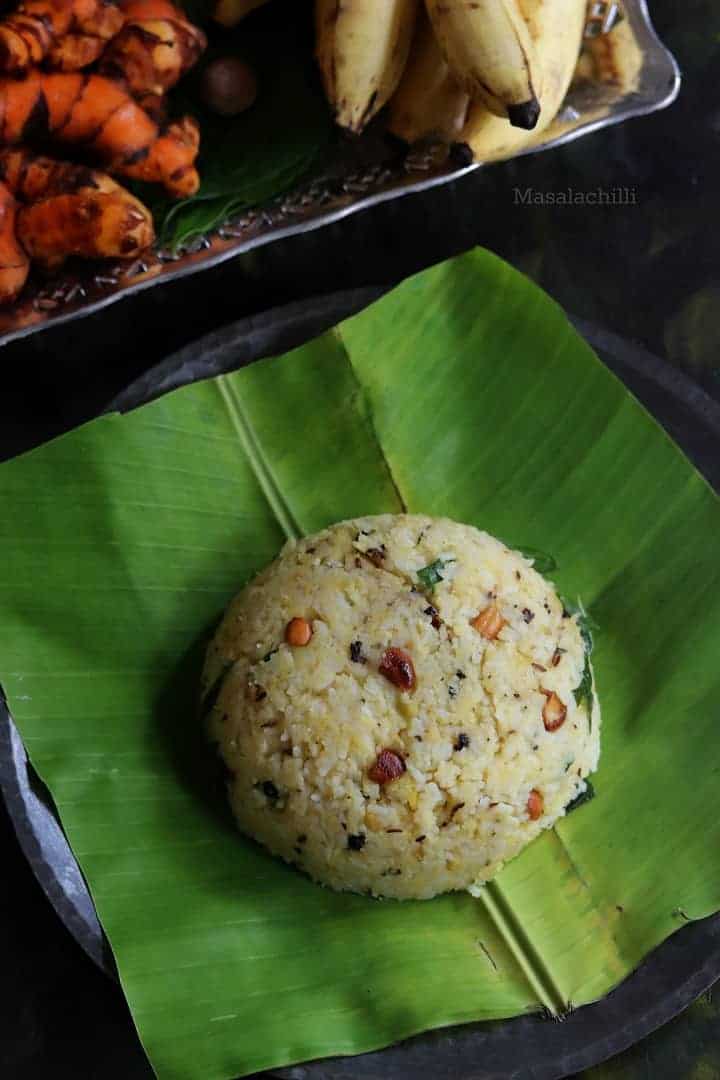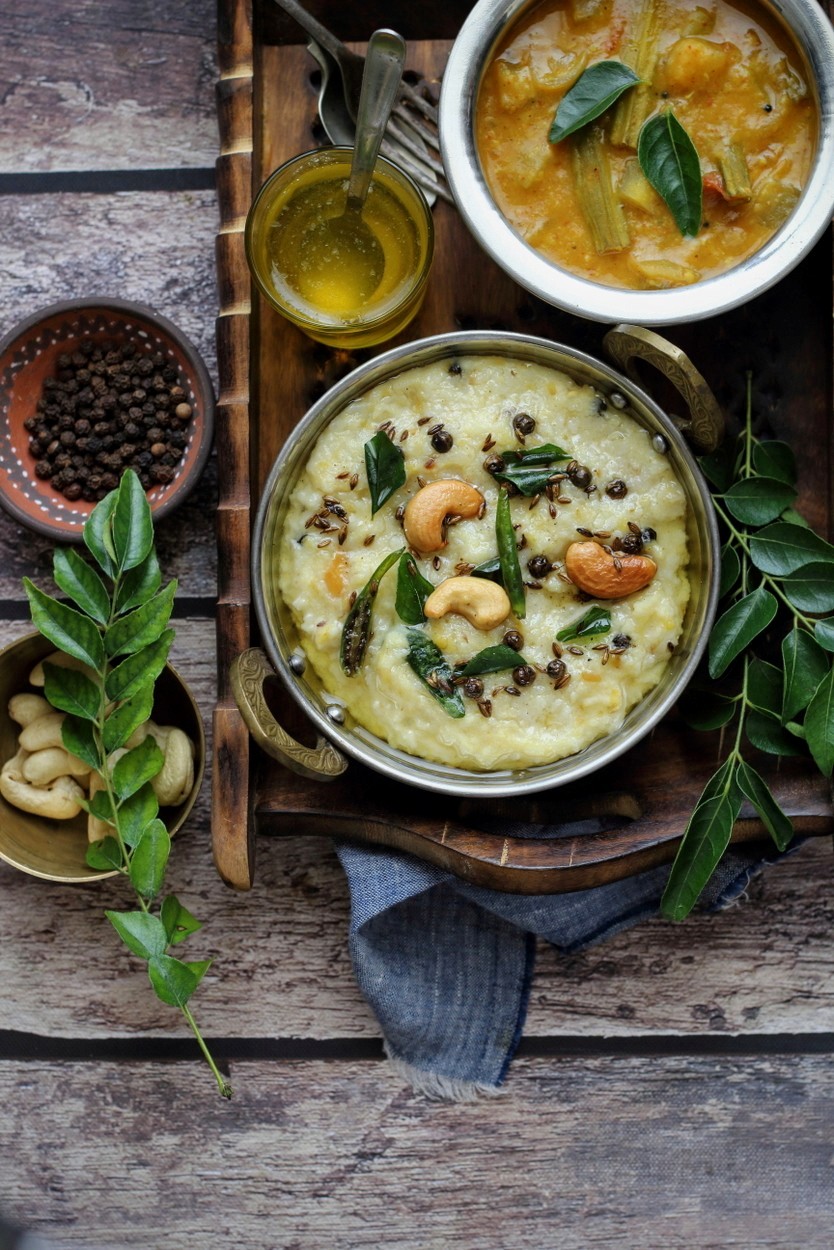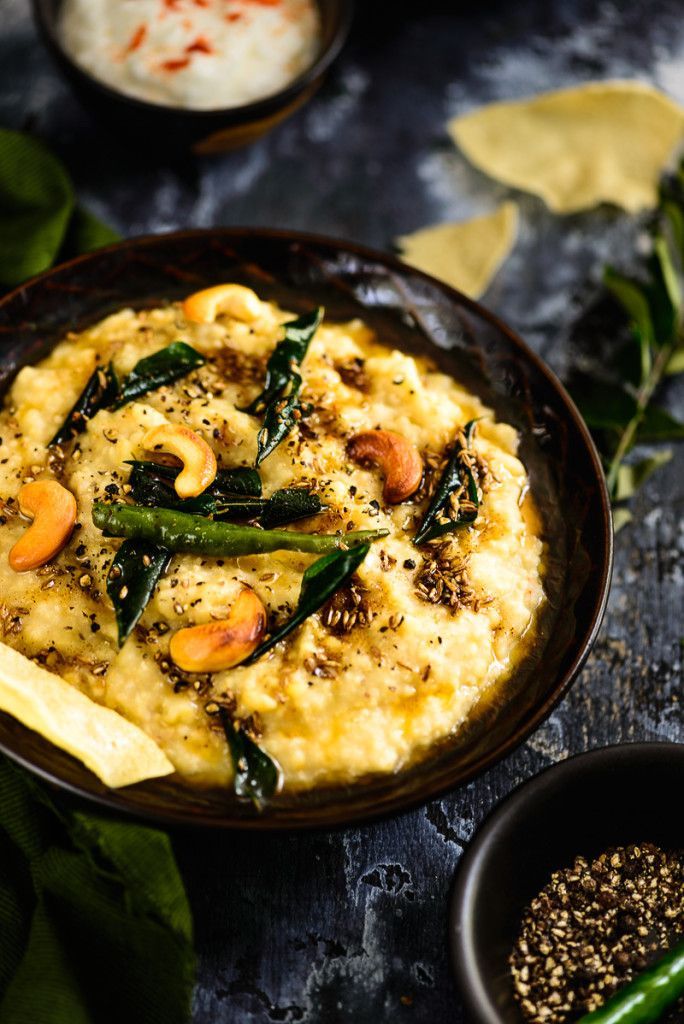Ven Pongal, also known simply as Pongal, is a popular South Indian breakfast dish hailing particularly from the cuisine of the state of Tamil Nadu. It’s a comforting and hearty dish predominantly consumed during the harvest festival of Pongal, which typically takes place in January and marks the end of the winter solstice.
The name “Ven Pongal” can be broken down to understand its cultural context; “Ven” translates to “white” in Tamil, referring to the color of the dish, while “Pongal” means “to boil over” or “spillover,” symbolizing abundance and prosperity. It’s part of a long-standing tradition where freshly harvested rice is cooked and allowed to boil over as a good omen for the year ahead.
Ven Pongal Savory Rice with Split Yellow Mung Beans Recipe


Ven Pongal Savory Rice with Split Yellow Mung Beans
Equipment
- 1 electric pressure cooker
Ingredients
- 11/2 cups short-grain rice such as sona masoori, rinsed in cool water, drained
- 1/2 cup split yellow mung beans rinsed and drained
- 11/2 tablespoons peppercorns divided
- 2 curry leaf sprigs
- 11/2 teaspoons salt
- 5 cups water
- 3 tablespoons ghee or clarified butter
- 2 tablespoons cumin seeds
- 10 whole cashews
- 1 tablespoon finely chopped peeled fresh ginger
Instructions
- In an electric pressure cooker, such as the Instant Pot®, or stovetop pressure cooker or pressure pan, combine the rice, split yellow mung beans, 1 tablespoon of peppercorns, curry leaves, salt, and water. Mix thoroughly.
- For an electric pressure cooker, lock the lid into place and make sure the valve is in the Sealed position. Select Pressure Cook or Manual and set the time for 8 minutes on High Pressure. Let the pressure release naturally. For a stovetop pressure cooker, place it over medium heat and place the lid on. Ensure the sealing ring is on and place the weight on. Pressure cook until the cooker “whistles” 4 or 5 times. Let the pressure release naturally.
- Carefully unlock and remove the lid. Using a spatula, mix and mash the pongal.
- Heat a small skillet over medium heat, melt the ghee.
- Add the cumin seeds, cashews, ginger, and the remaining 1⁄2 tablespoon of peppercorns. Cook for about 1 minute, stirring frequently, until the cashews turn light golden brown. Turn off the heat. Add the spice mixture to the mashed pongal, stirring until mixed thoroughly.
Notes
by 1 cup; the cooking time is the same.
Cooking Tips about Ven Pongal Savory Rice with Split Yellow Mung Beans

- Rice and Moong Dal Proportions: Use a ratio of 1 part moong dal to about 1.5 to 2 parts rice. This ensures a creamy texture where the rice grains are soft and the dal is well-integrated. The exact ratio can be adjusted to your preference of consistency.
- Toasting the Dal: Dry-roit the moong dal until they are fragrant before cooking. This brings out a nuttier flavor in the dal, which is central to the dish’s taste profile.
- Rinsing the Ingredients: It’s essential to thoroughly rinse rice and moong dal to get rid of any impurities and excess starch. This step will help avoid the Ven Pongal getting too sticky.
- The Use of Ghee: Ghee adds a rich aroma and is a key flavor component. Adding a generous amount of ghee during the tempering process not only enhances the taste but also gives Ven Pongal its characteristic glossy appearance. For those looking to make the dish vegan, substitute with a vegan-friendly oil or margarine but be aware this will change the flavor profile.
- Tempering Spices: A successful tempering (tadka) using cumin seeds, whole black peppercorns (or cracked pepper for more spiciness), minced ginger, curry leaves, and asafoetida (hing) is crucial. These should be fried in ghee until the spices are fragrant, which will infuse your Pongal with their flavors.
- Consistency Control: The dish should be cooked on a low-medium flame after tempering to prevent burning and stickiness at the bottom. Consistency can be controlled by the water content; typically, for one cup of the rice and dal mixture, about 3 to 4 cups of water are recommended for a mushy, porridge-like consistency.
- Garnish and Sides: Pongal is often garnished with fried cashew nuts and sometimes fresh coriander. Popular sides for Ven Pongal include coconut chutney, Sambar (lentil soup), and yogurt.
Serving suggestions about Ven Pongal Savory Rice with Split Yellow Mung Beans

- Coconut Chutney: The sweet and nutty flavor of coconut chutney complements the savory notes in the Pongal. It’s refreshing and adds another layer of flavor.
- Sambar: A flavorful lentil-based vegetable stew spiced with tamarind and a special blend of spices called sambar powder. The tangy and spiced nature of the sambar contrasts well with the mild Pongal.
- Vada: These are savory fried lentil doughnuts. They offer a crispy texture in opposition to the soft Pongal, adding a satisfying crunch to the meal.
- Raita: A yogurt-based condiment with raw or cooked vegetables like cucumber or onion. Its cooling nature can balance the warmth of the Pongal.
- Pickles: A small amount of spicy or sour pickle can elevate the flavors of the dish and add a zestful punch.
- Ghee: This is usually drizzled on top to add richness. Extra ghee enhances the creaminess of the dish and adds depth to its flavor profile.
- Fresh Coriander and Ginger: Sprinkle finely chopped coriander and a bit of grated fresh ginger on top for aromatic freshness.
Top 5 FAQs about Ven Pongal Savory Rice with Split Yellow Mung Beans

- What is the traditional way to serve Ven Pongal? Ven Pongal is traditionally served hot and often accompanied by sambar (a spicy lentil soup) and coconut chutney. It’s usually garnished with a mix of fried cashews, cumin seeds, and black peppercorns in ghee which adds a rich aroma and flavor to the dish. During ceremonial occasions, it might be served as part of a larger feast that includes a variety of other South Indian dishes.
- Can Ven Pongal be made vegan? Yes, Ven Pongal can be made vegan by substituting ghee with vegetable oil or a vegan butter alternative. However, ghee is a key flavor component in the traditional recipe so there may be a slight taste difference when using substitutes.
- Is Ven Pongal nutritious? Ven Pongal is a balanced dish that provides carbohydrates from the rice, protein from the moong dal, and fats from the ghee and cashews. Moong dal is rich in nutrients and fiber, making it beneficial for digestion. However, individuals concerned with calorie intake or fat content should be mindful of the portion size and the amount of ghee used.
- Are there any variations of Ven Pongal? There are indeed variations; ‘Khara Pongal’ is a spicier version that includes additional ingredients like ginger and green chilies. ‘Chakkara Pongal’, on the other hand, is a sweet variant made with jaggery, raisins, and cardamom. Both are popular and showcase the versatility of the Pongal dish.
- How do you achieve the perfect texture for Ven Pongal? The perfect Ven Pongal texture is soft and slightly mushy. Achieve this by cooking the rice and moong dal with more water than usual – a common ratio is 1 part rice to 1/4 part moong dal with 4 parts water. Cooking time is also crucial; it needs to be simmered on a low flame until the desired consistency is reached. A pressure cooker can expedite this process and ensure the right texture.
As the comforting aroma of Ven Pongal lingers in the air, drawing a satiating close to our culinary journey, we’re enveloped in the warmth and wholesomeness that this classic South Indian dish brings. Ven Pongal, with its creamy texture and soothing flavors, is a testament to the simple yet profound pleasures found in traditional Tamil cuisine.

Leave a Reply